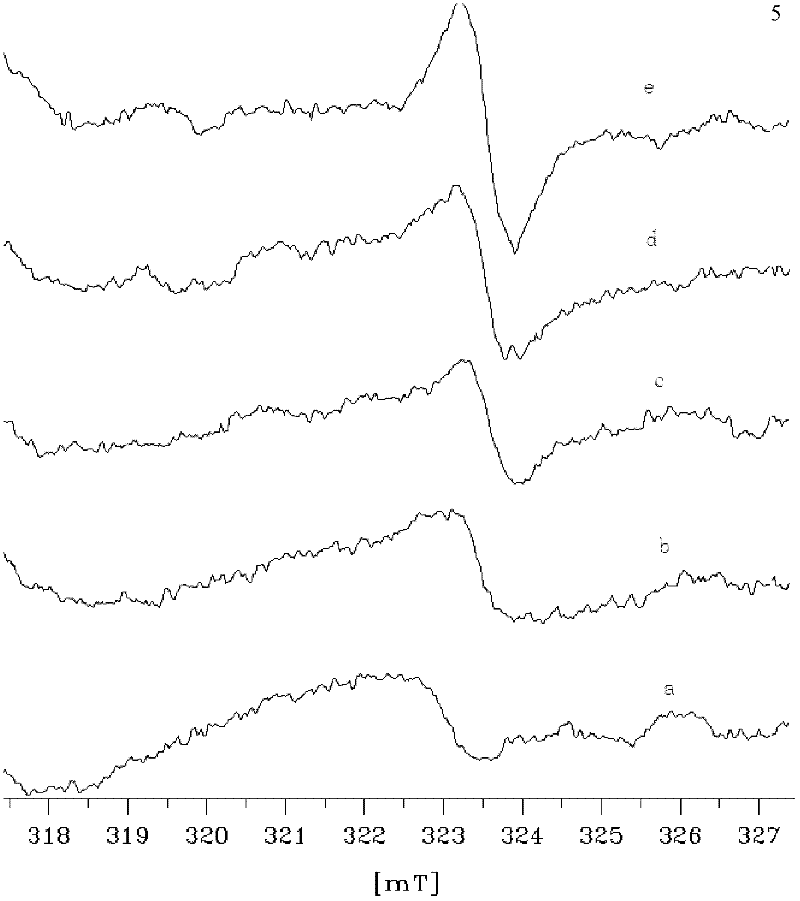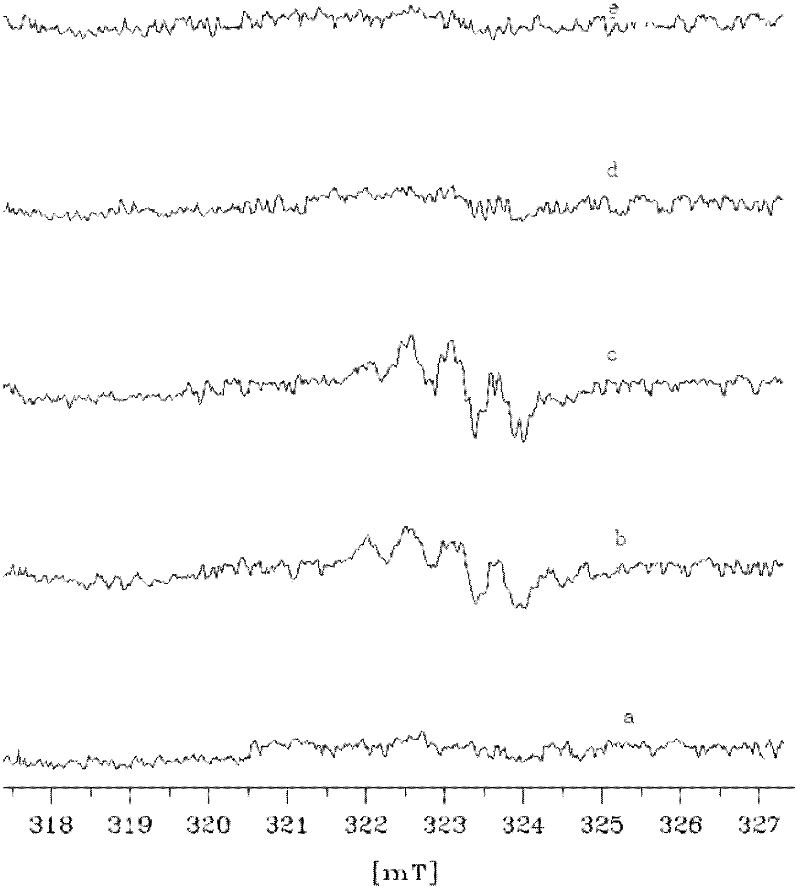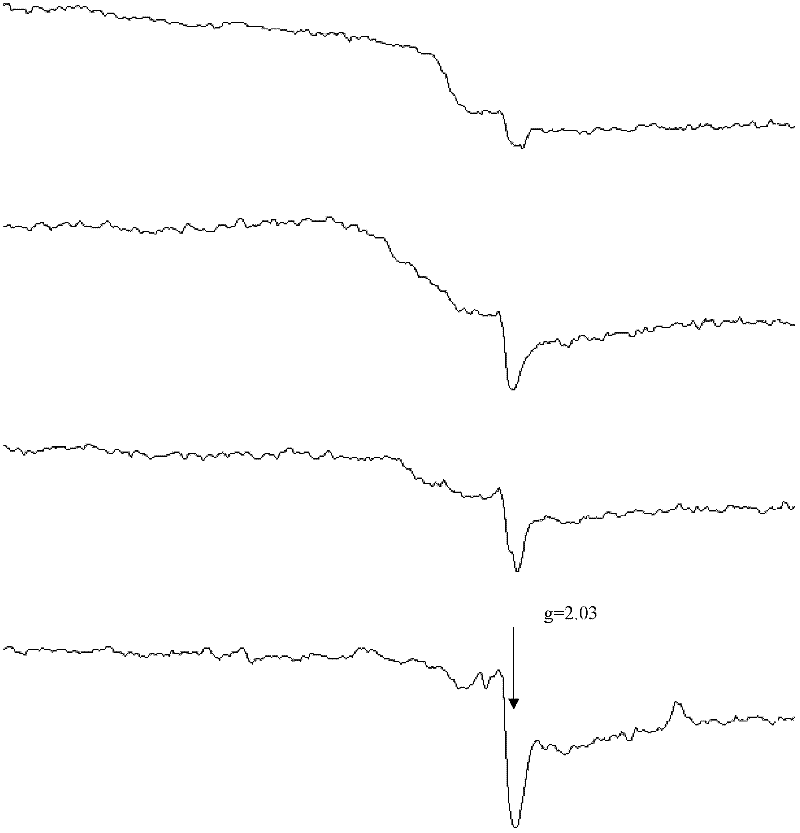Method for directly detecting drainage oil by using paramagnetic resonance wave spectroscopy
A technology of electron paramagnetic resonance and gutter oil, applied in the direction of using electron paramagnetic resonance for analysis, etc., can solve problems such as poor detection effect
- Summary
- Abstract
- Description
- Claims
- Application Information
AI Technical Summary
Problems solved by technology
Method used
Image
Examples
Embodiment 1
[0018] Example 1. Preparation of simulated waste oil: 5mL range hood filter oil was placed in a 250°C oil bath and heated for 12 hours, and a 0.5mL oil sample was taken for testing. The test temperature was 70-130°C, and the test was performed once every 20°C ( attached figure 1 ), and fresh oil sample (Arowana blend oil) (attached figure 2 ) comparison, after the comparison, it was found that the free radical characteristic peak of the waste oil sample continued to increase, while the signal of the fresh oil sample suddenly decreased at 110°C, and disappeared at 130°C.
Embodiment 2
[0019] Example 2. Select Fulinmen Grain Blending Oil, Guchuan Soybean Oil, Fire Bird Blending Oil, Arowana Blending Oil, Arowana Corn Oil, Longda Peanut Oil, Luhua 5S Pressed Peanut Oil, Arowana Sunflower Seed Oil, Arowana Sesame oil, Dashu brand extra virgin olive oil, and Laojingfang pure walnut oil all have very obvious reduction or disappearance of free radical signals when the temperature rises to 110°C (attached table 1).
Embodiment 3
[0020] Example 3. Mix waste oil and fresh oil (Arowana blended oil) at a volume ratio of 1:50, use the internal standard method, keep the test parameters and detection positions unchanged, and compare the changes in the signal at g=2.04 before and after heating and Signal change at g=2.000 (attached Figure 4 ). It was found that the signal at g=2.04 increased after being heated in an oil bath at 100°C for 16 hours, while the signal at g=2.000 decreased, while the signal at g=2.04 of fresh oil (Arowana blended oil) changed under the same conditions small, while the signal at g=2.000 increases.
PUM
 Login to View More
Login to View More Abstract
Description
Claims
Application Information
 Login to View More
Login to View More - R&D
- Intellectual Property
- Life Sciences
- Materials
- Tech Scout
- Unparalleled Data Quality
- Higher Quality Content
- 60% Fewer Hallucinations
Browse by: Latest US Patents, China's latest patents, Technical Efficacy Thesaurus, Application Domain, Technology Topic, Popular Technical Reports.
© 2025 PatSnap. All rights reserved.Legal|Privacy policy|Modern Slavery Act Transparency Statement|Sitemap|About US| Contact US: help@patsnap.com



